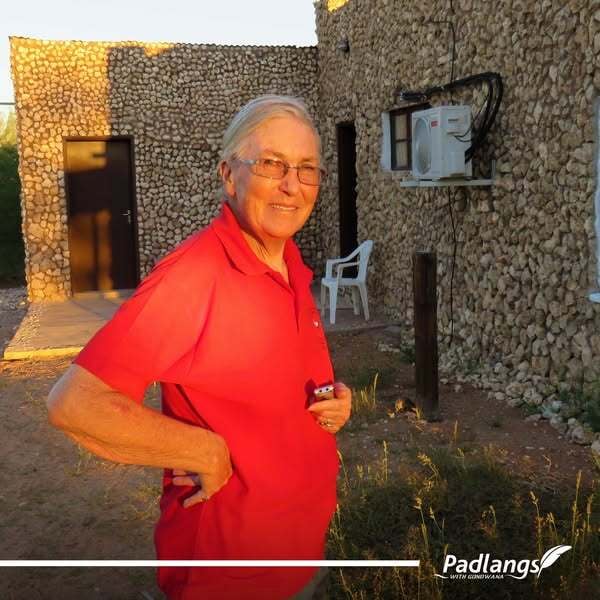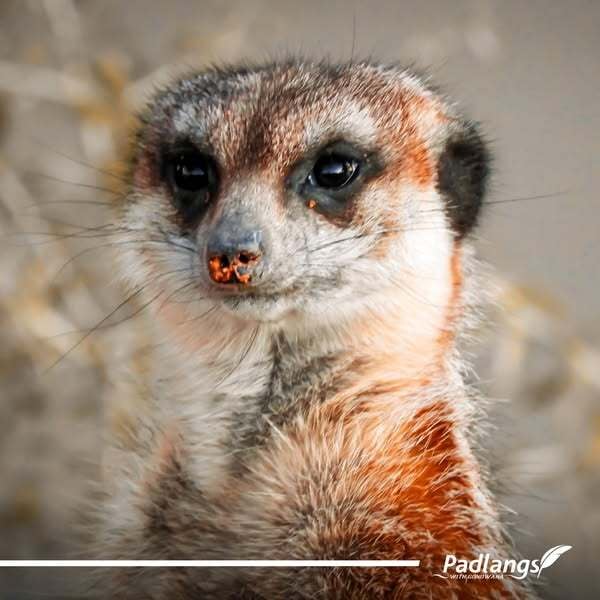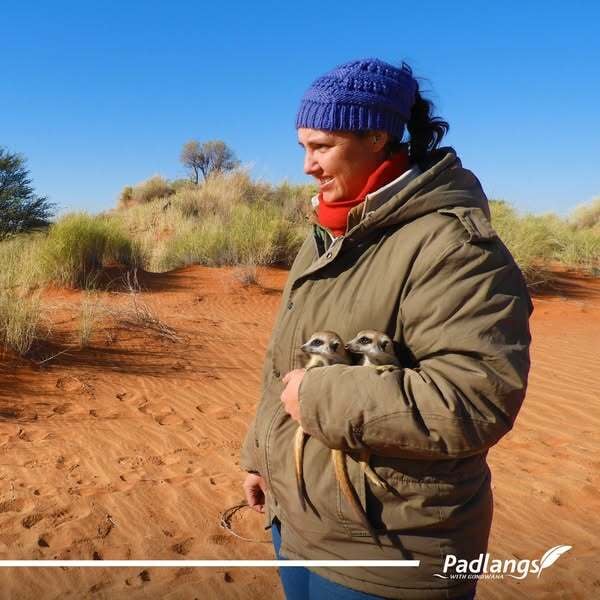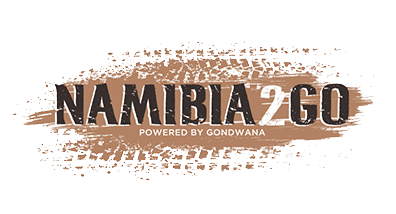It was about ten years ago on my way to the Kgalagadi in the Northern Cape that Kalahari Trails Meerkat Sanctuary caught my attention. I braked and turned in. It was a memorable introduction into the life of meerkats and the extraordinary work of Prof Anne Rasa, who I’m certain could speak Meerkatese. And it charmed the socks off me!
I joined Anne outside her house in the late afternoons as the little cherubs turned into vicious carnivores, greedily devouring the bloody pieces of meat Anne gave them. Then they turned into cherubs again as they were anointed by the last of the afternoon light, which haloed their fur in gold. Anne graciously told me about her life with these rescued meerkats in the comfort of her lounge as they ran and tumbled over her feet, completely at home in her presence. To my inexperienced eyes, they seemed to have happily accepted her as a family member or perhaps an honorary meerkat.

Anne told me how she never intended to start a Meerkat Sanctuary, but her lifetime work studying the intriguing behaviour of the various social mongoose species, specifically the Dwarf Mongoose, stood her in good stead. When she fell in love with this piece of land in the Kalahari, it didn’t take long for Nature Conservation and the local police to learn that there was a person in the neighbourhood who understood meerkat (suricate) behaviour. They started to drop off the first injured, sick and traumatised meerkats, which had been found injured or confiscated from the illegal pet trade. They realised that Anne was a natural foster-parent for the Kalahari residents. Over time they dropped off another meerkat, and then another. It naturally evolved from there. Eventually they asked Anne if Kalahari Trails could become the official Northern Cape meerkat sanctuary. And she readily agreed.
But it wasn’t as easy as all that. It took a lot of dedication, funds, time and care as she nursed the meerkats back to health, fed them and hand-reared the babies, digging deeply into her own pocket and relying on donations from the public. Anne started a successful programme placing the meerkats together to form groups, encouraging them to forage for their own food, dig their own burrows, and eventually, when they were ready, to move off to become wild meerkats. It was that happy ending that everyone wants to hear, when animals get another chance to live a wild, free life, as nature intended.
It was with more than a touch of sadness that I learned of Anne’s passing, so I was overjoyed when I visited the sanctuary again recently to discover that her good work is continuing with her son, Richard (Raz) Rasa-Phillips, continuing his mom’s legacy. And that Kalahari Trails has upgraded their accommodation, which includes their eco-campsite and tree camp, chalets and the guesthouse, the hub of the sanctuary, making it a wonderful stopover en route the transfrontier park.

As I drove in on the crisp winter evening, I was greeted by the sight of a few meerkats, lit up in the afternoon sunlight, sitting on the wall watching me. I learned later that they were members of the semi-wild group paying a visit to the house. They weren’t the only ones welcoming me in. Mareli van der Berg, the meerkats new guardian and guide was standing behind them. She quickly got me up to date with what was presently happening at the sanctuary.
At the time of my visit there were two open-topped walled areas, each with its own meerkat group. The one area housed four rescued meerkats that had arrived from a reserve. They still had to learn to fend for themselves. The other group had formed a cohesive group over the last year as they had been brought in individually to the sanctuary. It included two babies, which Mareli had hand-reared, feeding them two-hourly through the night and day, and who had chewed their way through her home. She was encouraging them to forage and they were to join us on our nature walk the next morning.
As the winter sun rose sleepily in the sky, I joined Mareli outside where the meerkats were emerging from their burrows to catch the sun. She tucked the two babies into her jacket to keep warm as we walked along and she ‘read the Bushman newspaper’, pointing out who had stepped or slithered on the sand during the evening. It was a busy night with tracks from a Cape furry-tail gerbil, striped polecat, corn cricket, whip snake, springbok, gemsbok and a ‘drunk’ dove weaving along. After a while, we stopped and the babies (Nacho and Marguerite) were let down to dig and forage. They happily started scooping up the sand like little earth-moving machines and in no time were snacking on beetles, ‘koringkrieks’ (corn crickets) and crunchy millipedes.

While they were busy, scratching and digging, Mareli filled me in about all things meerkat. Most importantly, and to discourage anyone who thinks differently, she told me that meerkats DO NOT make good pets. They are social animals that need to live with their family groups in the wild. As babies they will soon tear your things apart, dig out the grout between your tiles, destroy your house and as they grow up will start to show aggression, usually to children. “Having them in the house is like having a toddler and a teenager with ADHD (Attention Deficit/Hyperactivity Disorder) and FOMO (Fear of missing out),” she told me, sharing her hands-on meerkat experience. She also pointed to her thumb that was still healing after a hand-reared meerkat decided to take a bite. “Don’t worry,” she said looking at my concerned expression, “I bit it straight back on the tail.” This reminded me that Prof Anne had called them ‘the pitbulls of the mongoose family’.
Meerkats live in an organised social structure. In the group everyone works together and has a role. She explained how there is the alpha female or matriarch (and mother to the babies), babysitters and sentries, and how the group can be as large as twenty or even forty animals. The forage over an area of about six square kilometres. And they can be fierce when the need arises. They are also excellent communicators and have around forty calls, precisely letting the group know what predators are about, above or on the ground. Mareli uses three calls regularly, a ‘prrrr prrrr’ to get them foraging, a ‘perrep, perrep’ (we’re moving on call) and a warning call when she needs them to move quickly to escape danger. As she told me about the fascinating life of the meerkat, I realised that she too had learnt to speak Meerkatese.
Arriving for a two-month internship with Prof Anne in 2019, the Kalahari and meerkats quickly crept into her heart. The next year she started full time and found herself in the deep-end with meerkat babies to rear and the responsibilities that come with being a guardian or babysitter for one of Kalahari’s dearest and most quintessential animals.
As we walked along, through the long Kalahari sour grass, which had carpeted the red sand like a long hairdo, she explained the release process. This involves finding a suitable area, a distance away from the other meerkat groups, and relocating the group ready for a life in the wild. The meerkats are placed in a bottomless rectangular cage that is dug into the ground, from which they dig themselves out over a period of two days. This gives them the chance to acclimatise to the area while providing an area of safety should they need it. Mareli keeps an eye on their condition during this time and supplements their food until she is satisfied that they are foraging successfully on their own.
“It’s a bittersweet process,” she told me as we drove to the site of a previous released group, some of whom were babies that she had hand-reared. They weren’t home, either having their afternoon siesta or out foraging, just as a wild group ought to do.
The sanctuary touched my heartstrings as usual, even without Anne there. Or, I thought, perhaps she still is. Her memorial stone stands on a hillock in the red sand overlooking the Kalahari land she loved so much. Mareli told me how the meerkats sometimes scratch in the sand around it or use it as a sentry post, honouring her in the very best way possible.
(Visitors are welcome to visit the meerkats at the Kalahari Trails Meerkat Sanctuary, 35km south of the Kgalagadi Transfrontier Park (visits by donation), join a guided nature walk (if lucky you’ll have some meerkats for company) a sunset walk/drive and a scorpion night walk (in the summer); and to stay over at the Kalahari Trails guesthouse, chalets, campsite or bushcamp to experience the beauty of the Kalahari: +27 (0)63 087 7732, www.kalaharitrails.co.za, info@kalahari-trails.co.za
Keep abreast of the enchanting, exciting and ever-changing Meerkat News on Facebook.com/kalaharitrails)


.png)
.jpg)
.jpg)




.png)

SUBMIT YOUR COMMENT